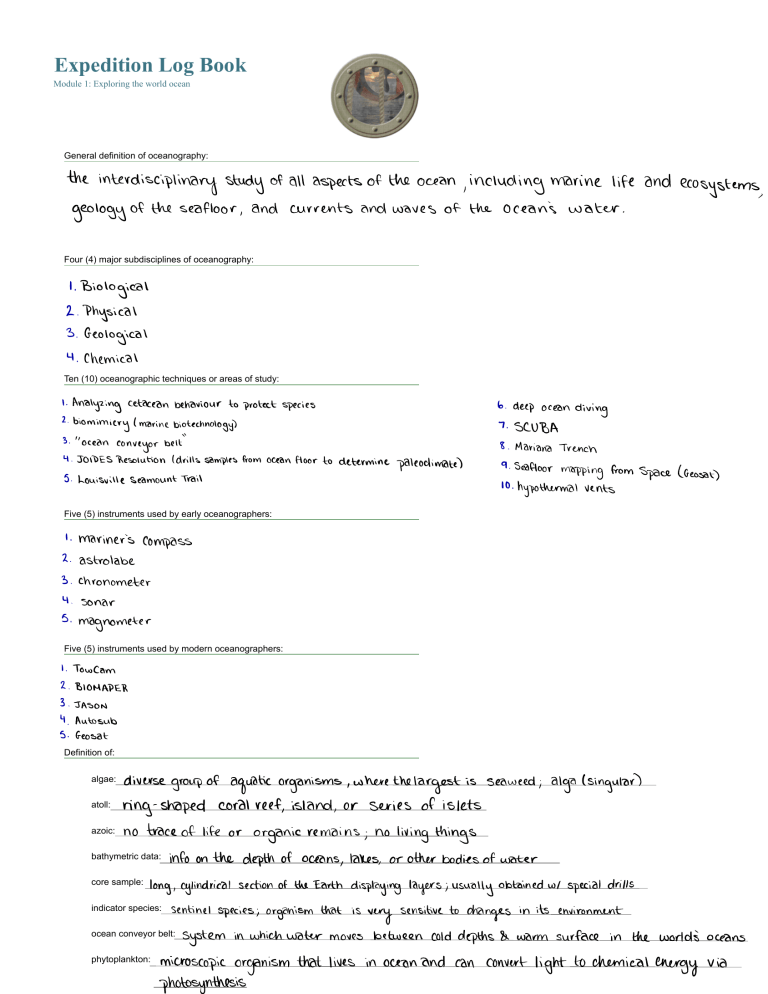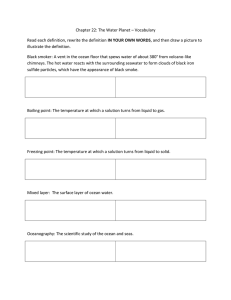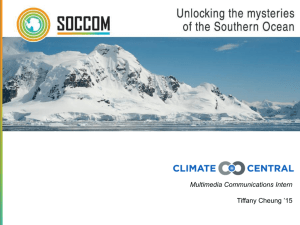
Expedition Log Book Module 1: Exploring the world ocean General definition of oceanography: the interdisciplinary study all aspects of the of the seafloor, and geology of currents and ocean, including waves the of marine life and ocean's ecosystems, water. Four (4) major subdisciplines of oceanography: Biological 1. 2. Physical 3. Geological 4. Chemical Ten (10) oceanographic techniques or areas of study: Analyzing cetacean behaviour to 2. biomimicry (marine biotechnology) 1. 3. "Ocean conveyor protect species 6. deep ocean belt" 4. JOIDES Resolution (drills samples from ocean floor to determine polodimate) 5. Louisville Seamount Trail diving 7. SCUBA 8. Maricua Trench a.Sepfloor 10. mopping hypothermal from space (Geosit) vents Five (5) instruments used by early oceanographers: 1 moriner's compass 2. Astrolabe 3. Chronometer 4. 5. Sonar magnometer Five (5) instruments used by modern oceanographers: 1. TowCam 2. BIOMADER 3. JASON 4. Autosub 5. Geosat Definition of: algG (singular) algae:& ofW o r se the where is seaweed; aquatic organisms, group atoll: ring-shaped azoic: no cord trace of life or reef, island, or largest series of islets organic remains;no living things thedepthofoceans,oon ↑f cues,rotherbodiesofwaterreedw bathymetric data: core sample: special discs indicator species:A f n e l that sensitive to in its environment is species; f organism ocean conveyor belt: system in phytoplankton: which water very moves changes between cold depths warm surface in oceans the world's #coscopic organism that lives in occncend can convert light to chemical energy via photosynthesis




